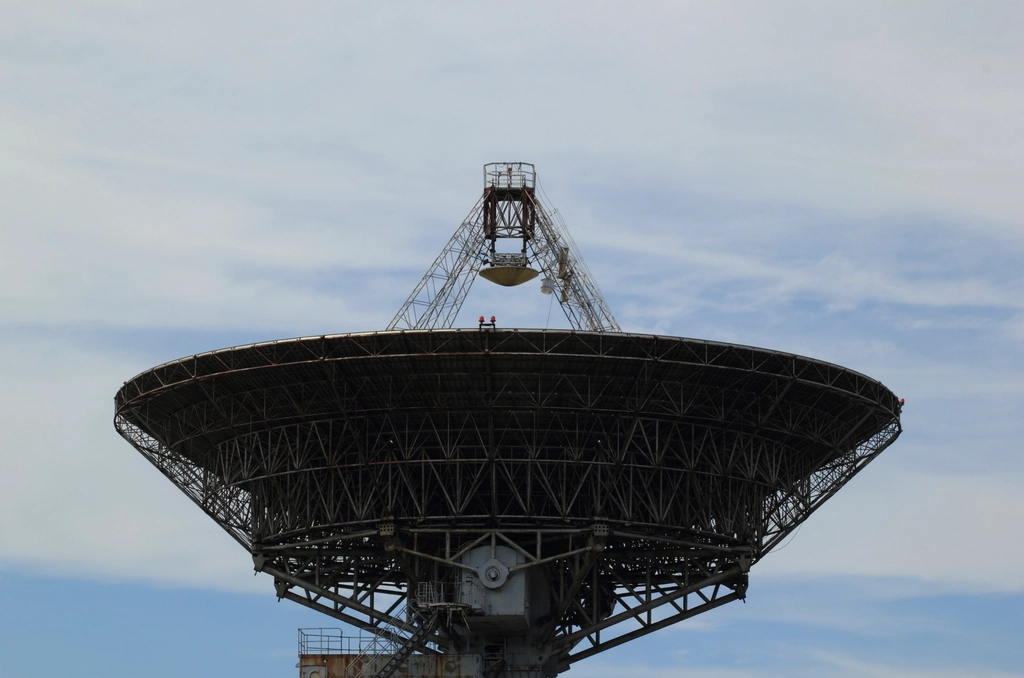astronomy
A Bizarre Repeating Radio Signal from Space Perplexes Astronomers
Mysterious radio signal from space defies explanation, cycling through three states every hour. Aliens not likely, scientists suggest neutron star or white dwarf.

Our vast universe never ceases to amaze, and astronomers have recently stumbled upon yet another cosmic enigma. An article published on the website “New Atlas” discusses the discovery of a peculiar radio signal that repeats every hour, oscillating between three distinct states. This signal, officially designated ASKAP J1935+2148, defies current scientific explanations, offering a tantalizing mystery that has captured the attention of researchers worldwide.
The Elusive Signal:
The radio signal was initially detected by the ASKAP radio telescope in Australia as part of its mission to monitor transient pulses across the sky. What makes ASKAP J1935+2148 particularly intriguing is its cyclical nature, displaying three different emission states. At times, it emits brilliant flashes lasting 10 to 50 seconds, characterized by radio waves pointing in the same direction (linear polarization). Alternatively, the pulses become weaker, lasting only 370 milliseconds, and exhibit circular polarization. On occasion, the signal remains silent, missing its customary cue.
Unraveling the Mystery:
Lead author of the study, Dr. Manisha Caleb, shared her fascination with the signal’s distinct states, remarking, “What is intriguing is how this object displays three distinct emission states, each with properties entirely dissimilar from the others.” The MeerKAT radio telescope in South Africa played a vital role in discerning these unique characteristics. If the emissions did not originate from the same point in the sky, the link between these different signals would be less apparent.
Non-Alien Origins:
Although scenarios involving extraterrestrial life often capture our imagination, the scientists behind this discovery assure us that aliens are an unlikely explanation (probably). Instead, the most plausible hypothesis suggests that the signal originates from either a neutron star or a white dwarf. However, neither of these explanations fits perfectly within our current understanding of the physics governing these cosmic entities.
Neutron Stars and White Dwarfs:
Neutron stars, known for their regular emission of radio waves, are strong candidates to account for this unusual signal. The interplay between their powerful magnetic fields and complex plasma flows might justify the signal’s diversity. However, the significant stumbling block lies in the spin rate. Neutron stars typically rotate at speeds of seconds or fractions of a second per revolution, making it seemingly impossible for one to rotate as slowly as once every 54 minutes. While white dwarfs could potentially explain the slow rotation, the team admits that they lack knowledge of any mechanism capable of generating the observed radio signals.
Challenging Our Understanding:
The enigmatic nature of this repeating radio signal beckons further observation and analysis. Caleb postulates that the findings may prompt astronomers to reevaluate their long-held scientific knowledge surrounding neutron stars and white dwarfs, as well as their radio wave emissions and prevalence within the Milky Way galaxy. This discovery compounds the mystery, further testing existing theories and pushing scientific boundaries.
As humanity continues to unravel the secrets of the universe, discoveries like the repeating radio signal designated ASKAP J1935+2148 remind us of the vastness and complexity of cosmic phenomena. While the source of this signal remains unknown, speculation surrounding neutron stars, white dwarfs, and even unconventional possibilities, adds excitement to the scientific pursuit of knowledge. As astronomers eagerly await additional observations and investigations, the hope is that this cosmic riddle will ultimately shed new light on our understanding of the cosmos and its diverse wonders.
Sources:
- University of Sydney: https://www.sydney.edu.au/news-opinion/news/2024/06/05/slow-spinning-radio-neutron-star-breaks-all-the-rules.html
- The Conversation: https://theconversation.com/a-strange-intermittent-radio-signal-from-space-has-astronomers-puzzled-231385
- New Atlas: https://newatlas.com/space/radio-signal-space-repeats-hour-neutron-star-white-dwarf/